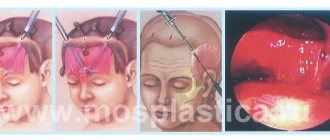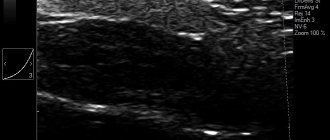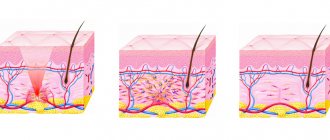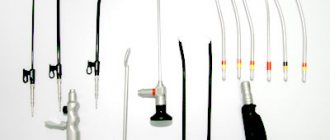Mendelssohn lifting - what is it?
Mendelssohn lifting is the latest method of plastic surgery for facial rejuvenation. Literally several doctors in Russia have knowledge and experience in using this lifting method. Among them is Vladimir Naumov.
Mendelssohn lifting technology consists of using natural voids for lifting, within which the moving tissues of the face move. The most important advantage of this approach is preserving the individuality of the face. Your face looks younger without retaining the appearance of surgery (as happens with outdated methods of surgery).
“We can say that during the Mendelssohn lifting operation we again form a young facial frame, fixing the tissues exactly in those places in which they were in youth.”
Naumov Vladimir Viktorovich, plastic surgeon
The essence of the technique
The operation takes place in deeper layers than other surgical lifts. And the result is worth it: firstly, after the operation there will be no tightness or unevenness (after all, subcutaneous fat moves along with the muscles), secondly, the result lasts 20 years instead of the usual 10-15. And finally, the seam: the doctor cleverly removes it into the folds of the ear, so the operation will definitely not be a reason to give up high hairstyles. Naumov, who came to plastic surgery from related maxillofacial surgery, treats this very responsibly.
“A plastic surgeon can operate for an hour, but it takes two hours to suture”
Naumov Vladimir Viktorovich, plastic surgeon
The Mendelssohn lift is so low-traumatic that, in fact, foreign and nonresident patients, already 5-6 days after the operation, go home after a follow-up examination and recover completely comfortably in their own conditions, without the need for any complex procedures.
Make an appointment:
— What effect is achieved with forehead endoscopy?
Raising the eyebrows, raising the corners of the eyes. The middle zone is slightly tightened.
— Is it possible to achieve the same results without surgery, for example, with Botox injections?
Botox can raise eyebrows, but they are raised only at one point and turn out to be a “house”. In addition, botulinum toxin gives a temporary effect and must be repeated every six months.
— When doing a forehead lift, do you use endotins or screws?
Both. When the eyebrows are “heavy” - low, masculine, asymmetrical, powerful muscles in the eyebrow area - then I use endotins. But mostly screws. There is one more point here: when installing screws, the eyebrows need to be tightened a little (make a slight hypercorrection), since within two months they “sit down,” that is, they droop a little. During this period, a person walks as if with a surprised look.
— Is it possible to combine upper eyelid surgery and forehead endoscopy?
Can. But I prefer to separate these operations. First I do the forehead. After the forehead is raised, the excess skin that remains on the eyelids no longer looks so heavy. A person sees a clear effect, and approximately 80% of patients stop at this stage and decide not to have blepharoplasty.
And the second point: an upper eyelid that is too “empty” looks unnatural. When there is a slight excess of tissue there, it is more natural. Therefore, the majority of patients undergo forehead endoscopy and come for blepharoplasty at an older age. Technically, upper blepharoplasty is not a complicated operation. But you need to feel it: understand exactly how much needs to be removed so that the upper eyelids look natural.
— And if you separate these operations, then with what break should you do them?
2-3 months after forehead endoscopy, upper blepharoplasty can be done.
— How long does the effect last after endoscopy of the forehead and midface?
The effect after a forehead lift lasts on average 10-15 years. The middle zone of the face is about 7-10 years. But everything very much depends on the patient’s lifestyle: weight changes, stress, etc.
— What is temparoplasty?
Temparoplasty is a temple lift. With this operation you can lift the corner of the eye and the outer part of the eyebrow. Temparoplasty is part of forehead endoscopy surgery. In our clinic, we can provide it either as a separate service or as part of the main forehead lift operation.
Valery Grigorievich, thank you for the interview! We are glad that we were able to talk in such detail about endoscopic operations. Today they are in great demand.
Questions and answers on Mendelssohn lifting to V.V. Naumov:
1) Is it true that surgeons do not accept patients with a history of thermage (sometimes thermolifting) procedures for a facelift?
The thermal lifting done actually greatly complicates the operation. Face lifting becomes almost impossible: the very spaces that I spoke about are practically absent after Thermage, the tissues are welded together. Deep SMAS lifting is most often possible, but the operation is longer and more complex.
2) Is it possible to do a surgical lift after filler injections?
It depends on the fillers. Fillers based on hyaluronic acid are not a hindrance to surgery.
3) Is thread lifting a hindrance to surgery?
No, the installation of threads does not interfere with any surgical lifting. Scar tissue will form around the absorbable sutures, but not enough to interfere with the lift. The surgeon removes the threads that are present in the skin.
4) Is it possible to have surgery if Radies has been injected into the facial tissue?
Together with a specialist, I always do an ultrasound of the facial tissues to assess the location of the drug, after which a decision is made to perform surgery. The drug calcifies tissues, because This is hydroxyapatite and detachment of facial tissue becomes impossible!
Clinical evaluation of 225 facelifts using the SMAS lift technique without temporal incisions.
Volumetric fat restoration (3-D facelift) is an important component of facial rejuvenation, and is used by >85% of plastic surgeons surveyed. The importance of midfacial fat grafting for rejuvenation has been emphasized in recent review articles, although there is not enough data to clearly demonstrate effectiveness. Transposition of the buccal fat pads (Bishat's lumps) also contributes to an increase in the volume of the malar tissue. However, measurements of zygomatic bone projection on standardized photographs did not reveal any net increase. Any benefit is likely to be small due to the small amount of fat available for transposition (~5 ml) and expected smoothing with sutures. It has been shown that only injections of zygomatic adipose tissue (midface fat grafting) provide a long-term increase in the volume of zygomatic tissue in facelift patients. Measurements show that malar tissue gain is likely to be maintained over 1 month, indicating the viability of the grafted fat during lipotransfer.
Fat is collected during a facelift and injected immediately. Injecting fat superficially into the SMAS avoids excessive compressive force. The injected fat masks any deformity that may occur as a result of lifting and fixing the SMAS. Although many operators inject fat (facial fat grafting) at the beginning of the procedure, the author prefers to harvest and inject fat after the facelift. This sequence does not subsequently allow the adipose tissue to leave the injection site. In addition, the facial tissue is already elevated, making fat placement more precise.
The “macro” fat injection technique (facial lipofilling) requires volumes of ~1 ml of fat injected under low pressure with each cannula pass, parallel to the orbital rim in the cheek, and is typically completed in <30 minutes, including fat collection. Traditional microinjection requires many passes, which possibly increases tissue trauma and swelling and increases operative time. The effectiveness of cheek fat microinjection has been demonstrated using serial magnetic resonance imaging and standardized photographs demonstrating a sustained increase in cheekbone projection. Trauma is minimized by using a cannula with a sufficiently large internal diameter (1.2 mm) and limiting the injection rate to ~1 ml/sec.
Injecting fat into the subcutaneous plane (subcutaneous facial fat grafting), which is pre-injected with a local anesthetic solution containing epinephrine, ensures that any blood vessels are constricted. The author has not experienced embolic events resulting from fat injection (facial lipofilling). Because fat injection in these areas occurs directly under the armpit, and not subcutaneously. Attempting more superficial injections may result in noticeable unevenness.
Although concern has been expressed about the possibility of fat hypertrophy with subsequent weight gain in the patient causing a cherubic appearance of the face, the author has not observed such an undesirable result using an average fat injection volume of approximately 30 mL. Nasolabial folds that have not been fully corrected by SMAS lift alone (SMAS lift) respond favorably to fat injection.
How is the operation performed?
Preparation is the same as for any other plastic surgery; there is no need to prepare specially. After you have decided to undergo a Mendelssohn lift, you need to take tests 1-2 days before the operation and, if no contraindications are found, feel free to undergo rejuvenation. Hospital stay for 2 days.
Many people are interested in the question: when is it recommended to have surgery, at what age? Dr. Naumov replies that it is not age that determines the operation, but the patient’s indications and desires.
“To what has been said, I can add that Mendelssohn Lifting is the latest world-class facial rejuvenation technique and for me it is a priority method:
- it is bloodless;
- “gentle” anesthesia, due to which there are no side effects of anesthesia (such as headaches);
- hidden seam in the ear area, which allows you to use short and high hairstyles;
- fast recovery period;
- maintaining your individuality;
- long lasting results;
- a beautiful, aesthetic, effective operation at the level of art.”
Mendelssohn lift
Are you thinking about a face lift, but doubt whether the results will look natural? Doctors at the Pirogov Clinic perform facelifts using a unique technique that is in demand all over the world - the Mendelssohn lift.
What is Mendelssohn lifting?
The method was first named after its author, Australian professor Brian Mendelson. The technique is based on deep research into anatomy and requires masterly execution. In the tissue structures of our face there are spaces (spaces) located under individual groups of facial muscles. With age or due to individual characteristics, the spaces increase, which gives the effect of sagging of the muscle frame. The Mendelssohn lift differs from the classic SMAS lift in that the surgeon acts in these voids during the operation, restoring their previous condition. Thus, it does not need to affect all tissues, but only individual areas, which makes the technique the most gentle and allows one to achieve a rejuvenation effect for 10–15 years, without losing natural facial features.
Who is the Mendelssohn lift suitable for?
The technique is gaining increasing popularity not only among those who are concerned about obvious age-related changes on the face, but also among those who have just begun to experience them or who want to make the oval of their face clearer. Thus, the intervention has no age restrictions.
Mendelssohn lift allows you to:
- eliminate gravitational changes such as jowls,
- get rid of nasolabial folds, “puppet wrinkles”,
- restore a clear oval face,
- remove double chin
- correct expression wrinkles,
- achieve a rejuvenation effect for 10 – 15 years.
Photos before and after Mendelssohn lifting
More examples can be found in the VKontakte and Instagram accounts of the Pirogov Clinic and
our plastic surgeons
How is the operation performed?
The Mendelssohn lift technology involves minimal tissue trauma. The surgeon performs all manipulations through two small accesses near the ear area. Lifting lasts 2–3 hours and is performed under general anesthesia. After the operation, the patient spends one day in a comfortable room at our clinic under the supervision of specialists.
Recovery period
The recovery period after the Mendelssohn lift is minimal. After the patient spends one day in the hospital, he can return to his normal life within a week after the operation, following all the doctor’s recommendations. The sutures are removed on the sixth day, leaving no visible traces of the intervention.
Mendelssohn lift result
The Mendelssohn lift affects deeper layers than a classic lift, which means you will look 10 to 15 years younger and this effect will last up to 15 years. After the operation, the oval of the face is restored, obvious signs of age-related changes disappear, the skin is tightened, and the lines of the cheekbones are outlined.
Mendelssohn lifting price
The cost of surgery in our clinic is from 195,300 rubles. The exact cost will depend on the desired result and will be clarified during a consultation with a plastic surgeon.
Reviews
Review of our plastic surgeon Egor Andreevich Parygin:
I would like to express my gratitude to the plastic surgeon Egor Andreevich Parygin. In our difficult times it is very difficult to find a good surgeon, but I am probably very lucky!!! Egor Andreevich is a doctor with a capital D!! In addition to all this, you can immediately feel the love for your work and the desire to help patients. A sociable, kind, charismatic person who immediately puts you at ease. Despite his youth, he copes with his duties very professionally; he is a responsive, attentive specialist, always ready to help his patients. You can always write to him on social networks with questions that interest you. He also does all the dressings himself. And what is also important, he is always attentive, knows how to calm and support, and set him up for recovery.
A huge THANK YOU for the work done! Health to you, Egor Andreevich and success in your work!
And I would like to express special gratitude to the anesthesiologist. In a very short time he became my best friend. Who constantly joked and held hands.
Read more reviews about our doctors here
Make an appointment










